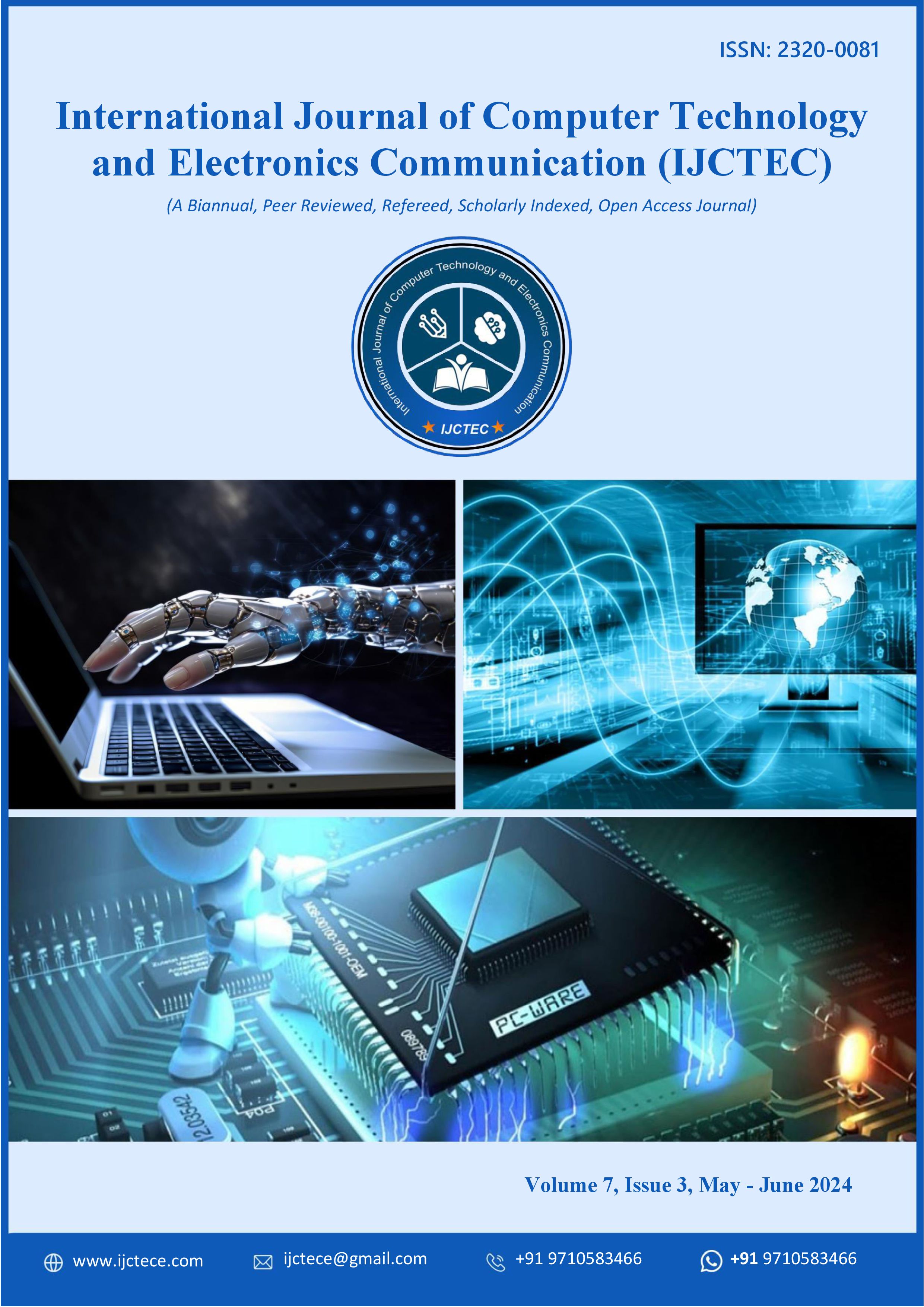Human-in-the-Loop AI Models for Trustworthy Autonomous Driving Systems
DOI:
https://doi.org/10.15680/IJCTECE.2024.0703004Keywords:
: Human-in-the-Loop (HITL), Autonomous Driving, Trustworthy AI, Active Learning, Interpretable AI, Real-Time Feedback, Safety-Critical Systems, Human-AI CollaborationAbstract
Trustworthiness in autonomous driving systems is paramount for ensuring safety, reliability, and user acceptance. While advances in AI and machine learning have significantly improved autonomous vehicle perception and decision-making, challenges remain related to transparency, robustness, and ethical concerns. Human-in-the-loop (HITL) AI models offer a promising approach by integrating human oversight, feedback, and intervention directly into the autonomous driving pipeline. This integration enables continuous learning, error correction, and decision validation, thereby enhancing system trustworthiness.
This paper explores the design and implementation of HITL AI models tailored for autonomous driving systems. We propose a framework that allows human operators to interact with the AI system at critical decision points, such as ambiguous perception outputs or complex navigation scenarios. The framework incorporates real-time feedback loops, active learning mechanisms, and interpretable AI techniques to facilitate human understanding and influence over AI decisions.
We evaluate the proposed HITL system using simulated and real-world driving scenarios, demonstrating improved safety outcomes and increased system transparency. Results indicate that human intervention can significantly reduce false positives/negatives in object detection and classification while enhancing the adaptability of the AI models to novel situations. Additionally, the inclusion of interpretable explanations increases operator confidence and trust in the system’s decisions.
This work underscores the importance of combining human expertise with AI capabilities to build autonomous driving systems that are not only effective but also trustworthy. Future work will focus on optimizing human-AI collaboration, scaling HITL approaches across fleet operations, and developing standardized protocols for human intervention in autonomous vehicle control.
References
1. Amershi, S., et al. (2014). "Power to the People: The Role of Humans in Interactive Machine Learning." AI Magazine.
2. Prasad, G. L. V., Nalini, T., & Sugumar, R. (2018). Mobility aware MAC protocol for providing energy efficiency and stability in mobile WSN. International Journal of Networking and Virtual Organisations, 18(3), 183-195.
3. Gonepally, S., Amuda, K. K., Kumbum, P. K., Adari, V. K., & Chunduru, V. K. (2023). Addressing supply chain administration challenges in the construction industry: A TOPSIS-based evaluation approach. Data Analytics and Artificial Intelligence, 3(1), 152–164.
4. Lekkala, C. (2019). Strategies for Effective Partitioning Data at Scale in Large-scale Analytics. European Journal of Advances in Engineering and Technology, 6(11), 49–55.
5. Kamar, E. (2016). "Directions in Hybrid Intelligence: Complementing AI Systems with Human Intelligence." Proceedings of the Twenty-Fifth International Joint Conference on Artificial Intelligence.
6. Wang, D., et al. (2020). "Human-in-the-Loop Machine Learning: Challenges and Opportunities." IEEE Intelligent Systems.
7. Poovaiah, S. A. D. (2022). Benchmarking provable resilience in convolutional neural networks: A study with Beta-CROWN and ERAN.
8. Doshi-Velez, F., & Kim, B. (2017). "Towards A Rigorous Science of Interpretable Machine Learning." arXiv preprint arXiv:1702.08608.
9. Kumbum, P. K., Adari, V. K., Chunduru, V. K., Gonepally, S., & Amuda, K. K. (2023). Navigating digital privacy and security effects on student financial behavior, academic performance, and well-being. Data Analytics and Artificial Intelligence, 3(2), 235–246.
10. Devaraju, S., & Boyd, T. (2021). AI-augmented workforce scheduling in cloud-enabled environments. World Journal of Advanced Research and Reviews, 12(3), 674-680.
11. Sener, O., et al. (2018). "Active Learning for Autonomous Driving." CVPR.
12. Amodei, D., et al. (2016). "Concrete Problems in AI Safety." arXiv preprint arXiv:1606.06565.
13. Lei, T., et al. (2016). "Rationalizing Neural Predictions." EMNLP.
14. Pareek, C. S. Synthetic Transactions in Financial Systems: A Pathway to Real-Time Transaction Simulation.
15. Soundappan, S.J., Sugumar, R.: Optimal knowledge extraction technique based on hybridisation of improved artificial bee colony algorithm and cuckoo search algorithm. Int. J. Bus. Intell. Data Min. 11, 338 (2016)
16. Devaraju, S., Katta, S., Donuru, A., & Devulapalli, H. Comparative Analysis of Enterprise HR Information System (HRIS) Platforms: Integration Architecture, Data Governance, and Digital Transformation Effectiveness in Workday, SAP SuccessFactors, Oracle HCM Cloud, and ADP Workforce Now.
17. CARLA Simulator. (2023). "Open-Source Simulator for Autonomous Driving Research." https://carla.org


